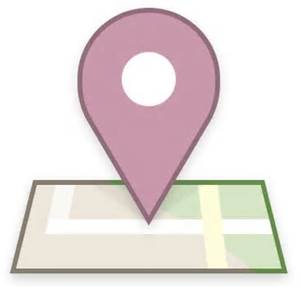The project will collect reports of extreme hail events. (see a video example here: YouTube footage). This page will show you what data we need and how to get the data to us.
Data collected (click links for further instructions): Location of hail, Time/Duration of hail, Hail depth, Hail size, Pictures & videos
The project will collect reports of extreme hail events. (see a video example here: YouTube footage). This page will show you what data we need and how to get the data to us.
Data collected (click links for further instructions): Location of hail, Time/Duration of hail, Hail depth, Hail size, Pictures & videos
Submit the data via (see the following links for further instructions): Google Forms or NOAA Storm Report or Email or Facebook or Twitter (google form, facebook, and twitter will require a pre-existing account)
Further instructions on how to draft the report:

|
Location: The preferred method is to report GPS Latitude and Longitude coordinates. Latitude and longitude can be found via Google Maps. Alternatively, the nearest cross street intersection is helpful, or if the location is very distant from the nearest intersection, the number of miles from nearest intersection and cardinal direction from the intersection are necessary. Example: The location was 5 miles south along county road 5 from the intersection of CR 5 and CR 10.
Google Maps Instructions: 1) Open Google Maps to the location, 2) Right click on the location you observed hail and click “What’s here?”, 3) Log Latitude and Longitude for the report |

|
Time/Duration:Note start and end time. To the nearest 5-minute interval is the most useful. Example: Hail started falling at 3:35 pm and ended at 3:55 pm Mountain Standard Time |

|
Hail Depth: The preferred method is by ruler measurement. The average of multiple measurements provides the best information. If a ruler or other length measuring device is not available, give your best estimate. The tip of your thumb to the knuckle is about an inch. Try not to measure drifts. High winds can pile up hail up against walls or other obstacles and provide inflated depth measurements. Please report if no hail fell or if some hail did fall but no accumulation occurred.
Example: The average of 10 measurements provided a depth of 3 inches. |

|
Hail Size: The preferred method is ruler measurement. If a ruler or other length measuring device is not available, give your best estimate.You can use common relations to estimate size, coin sizes (dimes, nickel, quarter, half dollar) or sports equipment (golf ball, baseball). Look for not only the maximum hail size, but the smallest hail size and what appears to be the average hail size. Be clear about reporting hail radius or diameter.
Helpful links: Hail size comparison chart. Hail size description chart. Hail reporting. Example: The largest hail stone found was 1 inch in diameter, the smallest, 0.25 inches in diameter, and what appeared to be the average size was 0.5 inches in diameter. |

|
Send Picture:Submit pictures of your surroundings. Try to capture the extent of the hail geographically. Pictures of hail depth and size are appreciated. If you want please provide your contact information and we will contact you if we have further questions. |
Further instructions on how to send the report:
|
|
Twitter to @NWSBoulder and use the hashtag #deephail
Sample Tweets:(151 characters with spaces)
(136 characters with spaces) |

|
NOAA Storm Report: Submit a NOAA Storm Report here (see instructionson how to fill out the form); Note that the reporting time is in CDT (MDT-1h). Put the information on h ail depth in the additional information box. Send pictures and videos to deephailCO@gmail.com |
|
|
Our facebook pages is: NWS Boulder. Example: 5 miles south of CR 5 & CR 10 from 3:35 to 3:55 pm on 5/21. Average depth: 3 inches. Max size: 1 inch, min size: 0.25 inch, avg size: 0.5 inch. |
 |
CoCoRaHS (Community Collaborative Rain, Hail, and Snow Network): Fill out “Depth Of Stones on Ground” under hail pad information or add hail depth to the Note. Provide image of the hail swath. |
|
|
Email: Send an email to: deephailCO@gmail.com Use Subject: DeepHail Example: 5 miles south of CR 5 & CR 10 from 3:35 to 3:55 pm on 5/21. Average depth: 3 inches. Max size: 1 inch, min size: 0.25 inch, avg size: 0.5 inch. |

|
Google Form: Submit a Deep Hail Report directly to us via this Google form. (send pictures and videos to deephailCO@gmail.com) |
